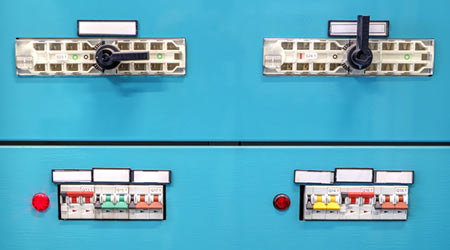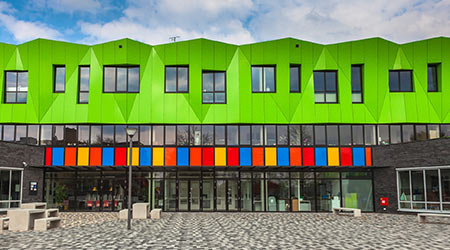
Giving Electrical Equipment a Long, Healthy Life
October 25, 2017
Consistent, quality power is necessary for nearly everything we do — at home, at play and at work — and maintaining the equipment that powers our lives is critical. When it comes to personal devices, understanding power and maintenance needs, life expectancy, and age considerations can be second nature, from installing antiviruses on new devices, to buying replacement batteries, to bringing devices to qualified staff for break/fix issues. However, for large, complex critical power systems, this type of lifecycle understanding can be lacking, and as a result, prescriptive and deliberate care and maintenance can be overlooked.
It is necessary to care for electrical distribution equipment at every stage of its lifecycle: installation to three years, the intermediate three- to 15-year period, and equipment over 15 years. There are several processes and steps to ensure equipment lives a fully functional life.
In the Beginning: Installation to Three Years
Proper documentation is a critical first step, and when electrical staff — whether in-house or outsourced — are installing electrical equipment, ensuring that referenced system documents are correct should be a top priority. While often an issue in older facilities, where drawings, blueprints and installation site materials may be out of date and do not represent the various changes to electrical layout made over time, the lack of proper documentation can be a problem for any project. Working off incorrect plans not only causes time and cost issues, but can result in equipment malfunction or safety risks — both during installation and after, when the equipment is energized. Beyond ensuring systems are installed appropriately, proper documentation also serves as a benchmark against which future maintenance requirements can be assessed as equipment gets older.
Once equipment is installed, commissioning and testing will help ensure it functions as designed. This may seem like a common-sense step, but it often goes undone. However, equipment commissioning will help facility and electrical personnel ensure the system is working to full capacity and enable them to identify any issues with the system that make it incapable of operating as specified.
An additional consideration is the application of testing systems that can help prevent adverse safety events and be used to measure and predict future maintenance needs. This includes proper grounding and bonding infrared scanning systems and alerting technologies that help maintain worker safety and enable simplified ongoing management and assessment as equipment gets older.
Keeping It Functioning: Equipment in Its Adolescence
As equipment gets older, ongoing maintenance and monitoring are essential for proper functioning and longevity. However, due to cost restrictions, many organizations defer to a reactive maintenance schedule, in which fixes are only issued once an asset breaks. It is actually more expensive down the line to engage in reactive rather than strategic, proactive, and predictive maintenance strategies — replacing of non-repairable equipment, facility shutdowns, safety risks, etc. Ongoing equipment maintenance includes: cleaning and lubing, keeping the environment around the equipment free of debris and taking regular oil samples, to name a few. This proactive maintenance approach enables facilities and electrical staff to identify, predict, and mitigate any issues that may have not have been found otherwise. Each maintenance task performed should be clearly documented for reference, so there is an existing record if the equipment ever fails or is damaged. Maintenance records should be analyzed to try to identify downward trends in performance. This documentation will also help assist in determining any hiccups in the system that can hinder the equipment’s ability to deliver power as it gets older.
Just as important as maintaining the equipment is diligently monitoring for any issues that it may be experiencing. Monitoring can be done in several different ways; in some cases, facility and electrical workers may need to personally monitor equipment, in others, equipment may have monitoring technologies already installed that can alert personnel when an issue is detected. Monitoring should cover every aspect of the system, including the electrical loads and currents, temperatures of the equipment or any other factor that may hinder its performance or cause damage.
It is worth reiterating that proactive maintenance is one of the most commonly overlooked tasks. To maintain facility uptime, managers should be attentive to how frequently on-staff personnel or contracted service agents are checking for early signs of malfunction, so issues can be addressed as soon as possible. Beyond this, spare parts should be available on site so maintenance can be performed in a timely fashion. Manufacturers typically provide maintenance guidelines for their equipment, and staff should familiarize themselves with and refer to the guides for proper maintenance and monitoring.
It is common for electrical equipment to last around 20 years, meaning maintenance and monitoring is critical for success from the installation of the equipment through its teenage years. With technologies consistently advancing, facility and electrical personnel should also plan for modernization and upgrading every 20 or so years.
Updating for Efficiency: Assets 15 Years or Older
Modernization and upgrading are a reality; facility and electrical staff should not redevelop a false sense of security by older equipment that continues to function. If properly maintained, electrical equipment will last for a significantly long time, however, there are obstacles to long-living distribution equipment. This includes diminished efficiency and overall reliability, as well as the reduced ease of maintenance. As equipment ages and needs replacement parts, it is possible those spare parts may no longer be available.
Further, technological change is a constant — with the growth of connected sensors, the Internet of Things, artificial intelligence, virtual reality and other technologies, electrical equipment will evolve to have more capabilities over time. To benefit from these, facilities personnel will need to consider upgrading before equipment reaches its full lifecycle.
Modernized equipment can be considered a competitive differentiator for a facility: newer devices are typically more efficient, can communicate with each other and can be remotely controlled. These aspects allow personnel to network equipment within a facility to operate the system in a more cohesive manner, and can also free staff from needing to be onsite for updates. With modernized equipment, facilities staff can expect greater operational efficiency and increased reliability.
Ensuring electrical equipment lasts its full lifetime, providing reliable consistent power throughout, requires care and attention to detail. From the installation period onward, there are a number of considerations for facility and electrical staff, from ensuring proper installation documentation to commissioning and testing, to regular maintenance and assessing for upgrades. Taking a proactive, thoughtful, and educated approach to electrical equipment lifecycle management can lower costs, increase facility productity, decrease worker risk — and be a boon to business.
This Quick Read was contributed by Eddie Jones, P.E., engineering manager for Schneider Electric Engineering Services, and submitted by Naomi Millán, senior editor, Building Operating Management. Jones' major responsibilities include promoting arc flash awareness through seminars and training classes, and assisting corporate customers with the development and maintenance of arc flash initiatives. To learn more about power system maintenance, go to www.facilitiesnet.com/11859bom.
Next
Read next on FacilitiesNet












